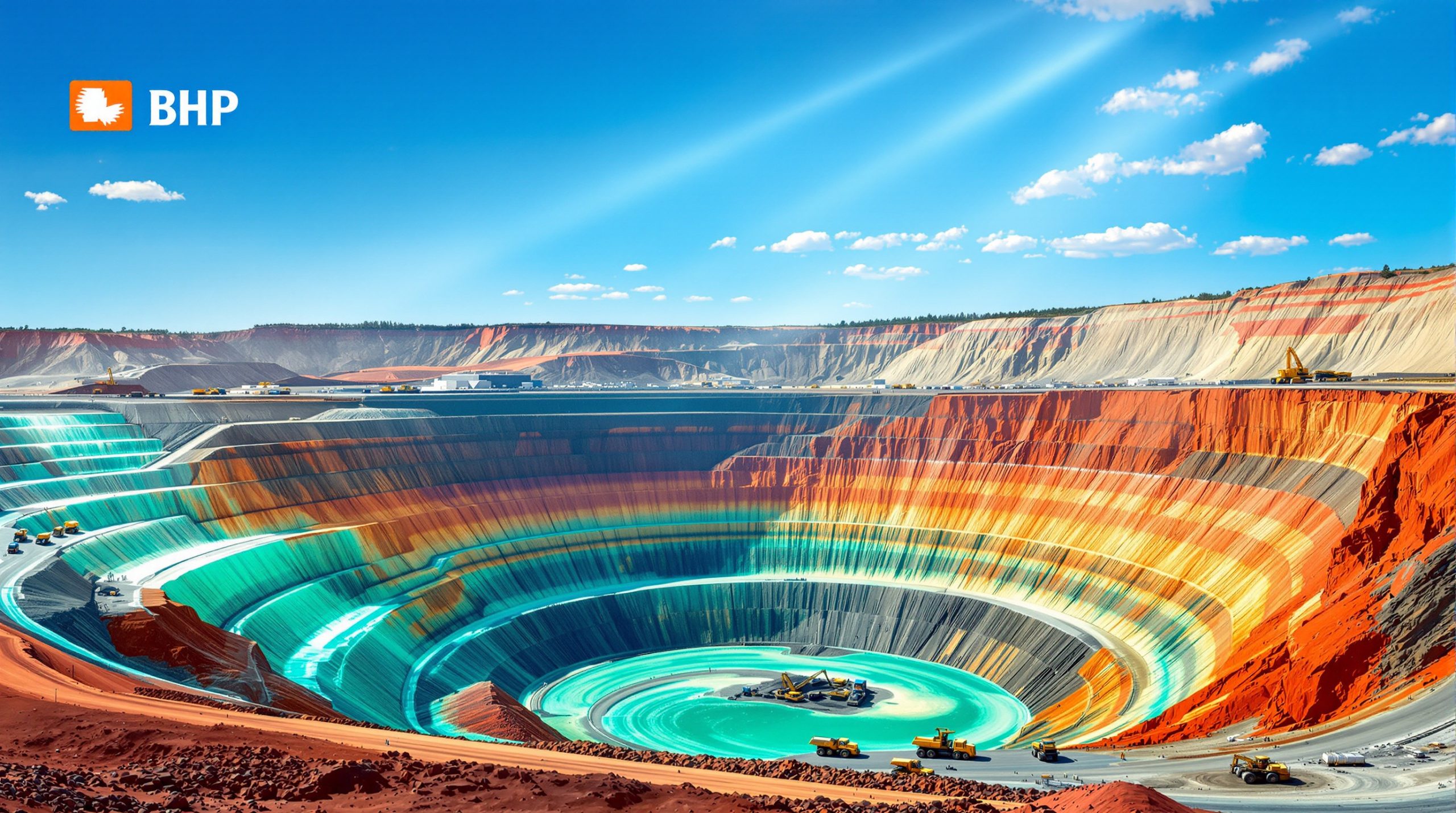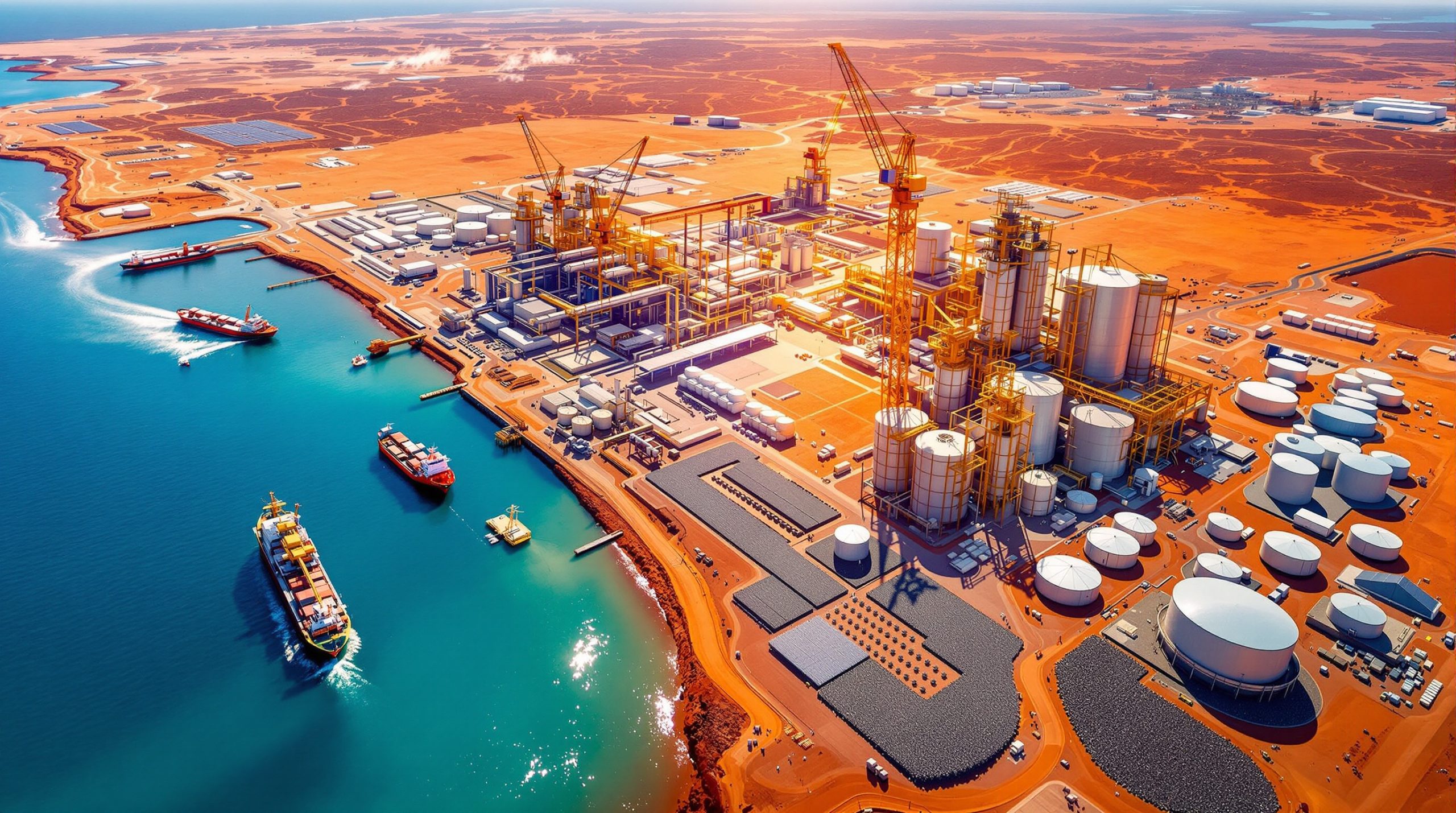Glencore's Bold Copper Strategy: Multi-Billion Dollar Investment Plans in Argentina
Glencore is placing a substantial bet on Argentina's copper sector with two massive projects that could transform the country's mining landscape. The mining giant has formally submitted applications under Argentina's new investment framework, signaling confidence in the region's potential despite historical economic volatility.
El Pachón and Agua Rica: Glencore's Twin Copper Giants
The scale of Glencore's ambition in Argentina is evident in the combined investment of approximately $13.5 billion USD across two major copper projects. El Pachón in San Juan province represents the larger of the two ventures, with Phase 1 development requiring $9.5 billion USD ($14.6 billion AUD). Meanwhile, the Agua Rica project in Catamarca province commands a substantial $4 billion USD ($6.1 billion AUD) investment.
These projects hold impressive resource estimates that justify such significant capital outlays. El Pachón contains approximately 6 billion tonnes of ore with average grades of 0.43% copper, 2.2 g/t silver, and 130 g/t molybdenum. Agua Rica offers 1.2 billion tonnes of ore with slightly higher copper grades at 0.47%, plus 0.2 g/t gold, 3.4 g/t silver, and 0.03% molybdenum.
The Agua Rica project features a strategic advantage in its development plan. Glencore intends to utilize the existing Alumbrera processing facilities located just 35km away, potentially reducing both capital expenditure and environmental impact while accelerating the timeline to production.
Argentina's RIGI Framework: Creating Investment Certainty
Argentina's Incentive Regime for Large Investments (RIGI) represents a pivotal shift in the country's approach to attracting foreign capital. This framework aims to provide what international mining companies have long sought in Argentina: economic stability, regulatory certainty, and enhanced investor protections.
For projects of this magnitude—which typically unfold over decades—predictability in fiscal and regulatory matters is crucial. The RIGI program addresses these concerns by establishing a more stable investment environment, particularly important given Argentina's history of economic volatility.
Glencore CEO Gary Nagle emphasized the program's significance: "This framework has changed the investment landscape in Argentina, providing a key catalyst to attract major foreign investment to the country." He added that the submission "marks a significant step towards the development of El Pachón and Agua Rica. It also deepens our longstanding commitment to Argentina, a country to which we have been a proud partner across multiple commodities for over two decades."
Economic Transformation Through Mining Development
The economic impact of these projects extends far beyond the substantial capital investment. During the construction phase alone, Glencore projects the creation of more than 10,000 direct jobs across both mining operations. Once fully operational, the projects will sustain over 2,500 permanent direct positions.
These employment figures represent only direct jobs. When considering the multiplier effect—where each mining job typically supports several positions in supporting industries—the total employment impact could reach tens of thousands of new jobs in regions that often struggle with limited economic opportunities.
San Juan and Catamarca provinces stand to benefit tremendously from these developments. Mining projects of this scale typically drive improvements in local infrastructure, including roads, power distribution, and water management systems. They also catalyze the growth of supporting businesses ranging from equipment maintenance to hospitality services.
Strategic Timing in the Global Copper Market
Glencore's massive investment comes at a critical juncture in global copper markets. Industry experts project potential supply deficits in the coming years as demand accelerates from several sectors:
- Renewable energy expansion requires substantial copper for solar arrays, wind turbines, and transmission infrastructure
- Electric vehicle production uses significantly more copper than conventional vehicles
- Grid modernization initiatives worldwide demand enormous quantities of copper conductors
- Digitalization and data center growth continues to increase copper consumption
Each of these demand drivers is experiencing exponential growth trajectories, while major new copper projects face increasingly lengthy development timelines. This timing positions Glencore and major copper investment in Argentina to potentially capture premium pricing when they eventually enter production.
The grade profile of these deposits—particularly Agua Rica with its 0.47% copper content—compares favorably with many aging mines currently in production, where grades have steadily declined. Higher grades typically translate to lower production costs and better profit margins.
Navigating Development Challenges
Despite the promising economics, Glencore faces several significant challenges in bringing these projects to fruition. Water management represents a critical concern, especially in San Juan province where El Pachón is located. The region experiences water scarcity, and mining operations require substantial water resources for processing.
Modern mining projects must implement sophisticated water management strategies, including:
- High-efficiency processing systems with water recycling
- Closed-loop water circuits to minimize consumption
- Alternative water sources such as desalination where feasible
- Strict monitoring of water quality in surrounding areas
Environmental compliance presents another layer of complexity. Argentina has strengthened its environmental regulations for mining in recent years, requiring comprehensive impact assessments, management plans, and monitoring programs. Tailings management—the disposal of processed ore waste—requires particularly careful planning to prevent contamination and ensure long-term stability.
Perhaps most critically, community relations will significantly influence these projects' success. Modern mining developments require not just government permits but also a "social license to operate" from local communities. Glencore will need to demonstrate tangible benefits to local populations while addressing concerns about environmental and social impacts.
Glencore's Argentina Experience: Building on Existing Relationships
Glencore brings considerable experience to these new ventures, having operated in Argentina for over two decades across multiple commodity sectors. This established presence provides advantages in navigating regulatory processes, understanding local business practices, and maintaining productive government relationships.
The company's decision to deepen its investment in Argentina reflects confidence in both the geological potential and the improving investment climate. Gary Nagle emphasized this ongoing commitment: "We look forward to working with the federal government and the respective administrations of San Juan and Catamarca to bring these projects to life, contributing to the provincial and national economies, and cementing Argentina's position as one of the world's leading mining jurisdictions."
This history of operations has allowed Glencore to build relationships with local contractors, suppliers, and workers—connections that will prove valuable during the development of these new projects.
Project Development Timeline and Production Potential
While specific timelines remain subject to regulatory approvals and investment decisions, major copper projects typically follow multi-year development schedules. Industry patterns suggest that with RIGI approval, construction at El Pachón and Agua Rica could potentially begin within 2-3 years, followed by 3-5 years of construction before first production.
This places initial copper output from these projects potentially in the early 2030s—a timeline that aligns with projected supply shortfalls in global copper supply forecast. The projects' combined production potential could position Argentina as a more significant contributor to global copper markets.
Production volumes will ultimately depend on final project configurations, but deposits of this scale and grade typically support mining operations with multi-decade lifespans. The phased development approach for El Pachón suggests Glencore is planning for long-term, sustained production from these assets.
Frequently Asked Questions About Glencore's Argentina Copper Projects
How will Argentina benefit economically beyond direct jobs?
Beyond the 10,000+ construction jobs and 2,500+ operational positions, these projects will generate significant tax and royalty revenues for both provincial and federal governments. Mining developments typically create substantial indirect employment through supplier networks and service providers. Additionally, the infrastructure improvements required for mining operations—including roads, power distribution, and water management—often benefit surrounding communities.
How do these copper deposits compare globally?
El Pachón and Agua Rica represent world-class copper deposits based on both size and grade. El Pachón's 6 billion tonnes of ore places it among the largest undeveloped copper resources globally. Agua Rica's slightly higher copper grade of 0.47% compares favorably with the global average grade of operating copper mines, which has declined to approximately 0.5% in recent years. The polymetallic nature of both deposits—containing silver, gold, and molybdenum alongside copper—enhances their economic value.
What makes Argentina attractive for copper investment despite historical volatility?
Argentina possesses several fundamental advantages for copper investment strategies:
- Exceptional geological potential, particularly along its Andean regions
- The new RIGI framework addressing historical concerns about economic stability
- Established mining regulations and permitting processes
- Proximity to existing mining infrastructure and skilled labor
- Strategic positioning within South America's mining corridor
The RIGI program specifically addresses the historical volatility that previously deterred investment, creating a more predictable environment for long-term capital deployment.
When might these projects begin contributing to global copper supply?
While Glencore has not published definitive timelines, industry development patterns suggest production could potentially begin in the early 2030s, assuming regulatory approvals proceed smoothly and investment decisions remain positive. This timeline aligns with projected global copper supply deficits, potentially allowing Glencore to capitalize on stronger market conditions.
The Glencore Chile smelter shutdown announced earlier has further tightened supply forecasts, making these Argentina projects even more strategically important to the company's long-term copper portfolio.
What environmental measures will these projects implement?
Modern copper mining projects typically incorporate extensive environmental protection measures, including:
- Water management systems with high recycling rates
- Dry-stack or filtered tailings to reduce water usage and increase stability
- Energy efficiency programs and renewable power integration
- Progressive rehabilitation of disturbed areas
- Comprehensive monitoring of water, air, and soil quality
- Biodiversity management plans for surrounding ecosystems
Glencore will need to detail specific environmental strategies during the permitting process to secure approvals from Argentina's regulatory authorities.
With optimistic copper price predictions from industry analysts and increasing focus on gold-copper exploration globally, Glencore's strategic investment in Argentina positions the company to capitalize on the growing demand for critical metals needed for the global energy transition.
Ready to Identify the Next Major Copper Discovery?
Discover significant mineral announcements before the market with Discovery Alert's proprietary Discovery IQ model, giving you the real-time insights needed to capitalise on emerging opportunities like copper discoveries. Explore how major mineral discoveries have historically generated substantial returns by visiting Discovery Alert's dedicated discoveries page.




